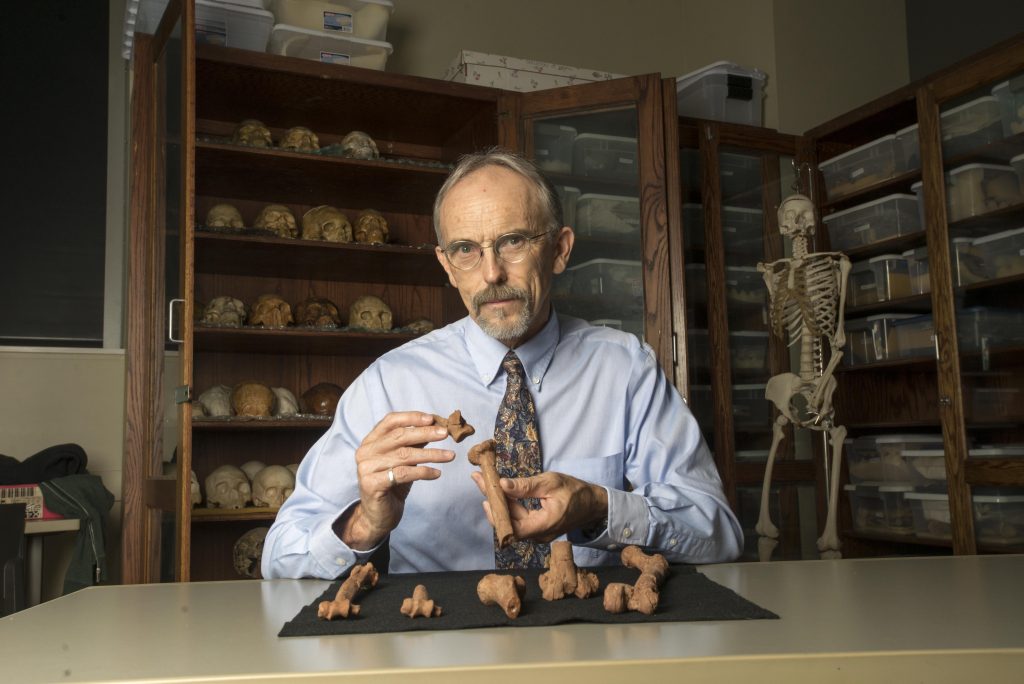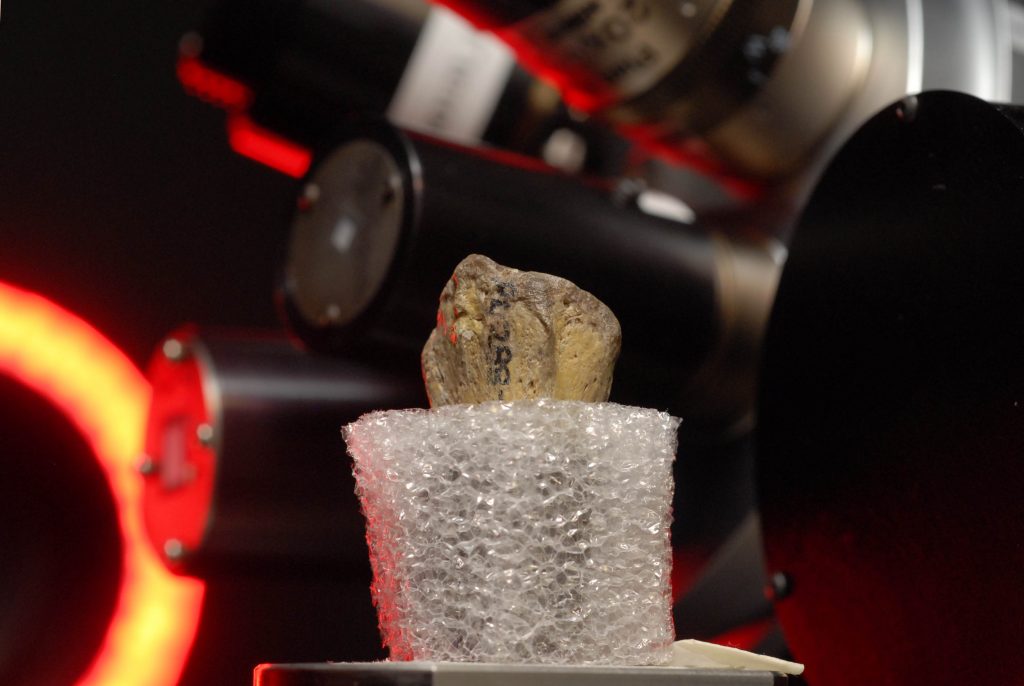Iconic Fossil Assigned Probable Cause of Death: A Big Fall

The tiny hominin known as “Lucy” is one of the most famous fossils of all time. A new analysis of fracture marks in her remains suggests that she might have died after falling from a tree—a poignant biographical detail that also suggests her species was at least partly arboreal. The study is published today in Nature.
Lucy—or much of her—was found in Ethiopia in 1974, and her fossilized bones have been dated to 3.18 million years ago. She has been assigned to the species Australopithecus afarensis, which paleontologists think was either our ancestor or a close relative of our ancestors.
Australopithecus afarensis left us fossil bones and fossil footprints that suggest they walked upright. But anthropologists have long debated whether the species spent all of their time on the ground. Could they have been at least partly arboreal, like the chimpanzees they resemble in many other respects—such as in their long, strong arms and curved fingers?
The lead author of the new study, anthropologist John Kappelman from the University of Texas at Austin, and his colleagues collected exceptionally detailed computerized tomography (CT) scans on the famous bones when the fossils were on a museum tour of the United States in 2008. The scans use X-rays at various angles to create huge numbers of images of “slices” through each bone every few microns. In total, the team took 35,000 images.
Studying the fractures, Kappelman was intrigued by the pattern of the break on the right shoulder. “If a person falls and they reach out their arms to break that fall, if the fall is high enough energy, what that does is drives the elements of the shoulder against each other,” he explains. “If the force is high enough, the scapula acts like an anvil and fractures the head of the humerus. That break forms a unique signature on the bone.” And that’s exactly what he saw on Lucy’s shoulder break, implying that she was conscious and trying to break a fall.
This discovery led Kappelman and his team to take a closer look at the rest of the bones. Those bones also told the story of a fall from a great height. And since paleoecological and geological evidence suggest Lucy died in a grassy woodland far from any mountains or cliffs, that suggested to the researchers that she fell from a tall tree.
So what was Lucy doing in the tree? She weighed roughly 60 pounds and was approximately 3 1/2 feet tall. “Where would you sleep if you were a little bitty person?” Kappelman asks. “She probably slept in trees for predator avoidance.”
Lucy’s likely arboreal tendencies have important evolutionary implications since scholars hypothesize that our ancestors were dramatically changed once they left life in the trees to make a home on the open savanna. Kappelman sees Lucy as a compromise. “I think that the sorts of adaptations that evolved in these early bipedal forms that were still a bit arboreal potentially compromised their ability to move efficiently and safely in the trees,” he says. In other words, Lucy may have traded the exciting new world of walking upright in the savanna for a higher risk of dying from a fall.
William Jungers, who retired from the department of anatomical sciences at Stony Brook University School of Medicine in New York and is now a research associate at a conservation research center in Madagascar, was one of the peer reviewers of the paper. He says he initially had “severe doubts” about the story Kappelman and his colleagues were telling, but that he ultimately felt convinced that the scenario they proposed was “plausible” and “compelling.” “‘Plausible’ is the key word because ‘paleoforensics’ doesn’t allow for replication experiments!” Jungers adds.
It might be impossible to push australopiths out of tall trees to replicate Lucy’s fall, but experts around the world can print out 3-D copies of Lucy’s shoulder and knee from files Kappelman is making available. They can see for themselves whether they agree with his analysis. “I’d be very interested to hear alternative hypotheses on this,” Kappelman says.
The implication—that the species was at least partly arboreal—seems pretty likely to Jungers. “The inference of sleeping nests in australopiths is not new. Nor is foraging in the trees. Some of us have been suggesting this for decades now,” he says. “Nest-building is a common feature of our closest living relatives, the African apes. It is not a stretch to suggest such behavior in an ancient hominin that was both terrestrial and arboreal.”
Carol Ward, director of anatomical sciences at the University of Missouri School of Medicine in Columbia, isn’t entirely convinced by Kappelman’s account of Lucy’s cause of death. But she agrees that the notion that Lucy spent some time in trees is easy to swallow. “It is entirely possible that Lucy fell from a tree, and that australopiths sometimes climbed trees,” Ward says. “People do today.”

































